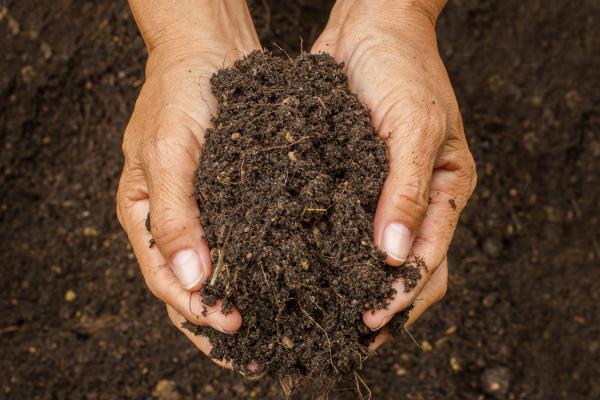Soil tillage on farms may significantly reduce the availability in crops of ergothioneine (ERGO), an amino acid produced by certain types of soil-borne fungi and bacteria that is known as a “longevity vitamin” due to its potent antioxidant properties, according to new research by an interdisciplinary team at Penn State. The study is among the first to demonstrate that soil disturbance can directly impact a key dietary factor associated with long-term human health.
“Research suggests that a lack of ergothioneine in the diet may result in increased incidences of chronic diseases of aging, such as Parkinson’s Disease and Alzheimer’s Disease, and reduced life expectancy,” said Robert Beelman, professor emeritus of food science.
Beelman noted that ERGO is produced by fungi, which is why mushrooms are among the leading dietary source of this amino acid. However, ERGO produced by soil-borne fungi also makes its way into plants.
“Research has demonstrated that tillage of agricultural soils can disrupt fungi populations in the soil and compromise the availability of this important amino acid,” said Sjoerd Duiker, professor of soil management and applied soil physics. “This led us to speculate that agricultural soils that receive minimal or no tillage may have higher levels of fungi, and therefore, crops grown in these soils may have higher ERGO levels than crops grown with aggressive tillage.”
To study the effects of tillage on ERGO content of crop plants, the team turned to an ongoing tillage study that began in 1978 at the Russell E. Larson Agricultural Research Center at Rock Springs in central Pennsylvania. The study comprises a randomized complete block design with three tillage treatments — moldboard plowing/disking/harrowing (MB), which represents the most intense tillage; chisel plowing/disking/harrowing (CD), which represents a medium amount of tillage; and no-till (NT) — each replicated four times. The crops grown in the study include maize, soybeans and oats. The team collected grain samples from each of the treatments, ground them into powder and used liquid chromatography and mass spectroscopy to analyze their ERGO content.
The researchers found that ERGO concentrations declined as tillage intensity increased. Specifically, from NT to MB, ERGO content declined by 32% for maize, 33% for soybeans and 28% for oats. In addition to being associated with reduced ERGO concentrations, increased tillage also was associated with reduced crop yields.
The team’s results appear in a recent issue of the journal Agronomy.
“Recently, there has been growing interest in replacing conventional agricultural methods with regenerative agriculture, which includes the use of no-till or minimal tillage, to restore soil health,” said Beelman. “This is important, not only for the environment, but also for human health, as our research suggests that healthy soils produce healthier foods. The fact that we found that crop yields are also higher when tillage is reduced indicates that this practice may also be profitable for farmers.”
Other Penn State authors on the paper include John Richie, professor of public health sciences and pharmacology; Allen Phillips, professor emeritus of biochemistry; Michael Kalaras, research associate in food science; and Dongxiao Sun, assistant professor of pharmacology.
The USDA and the Center for Plant and Mushroom Foods for Health at Penn State partially supported this research.


